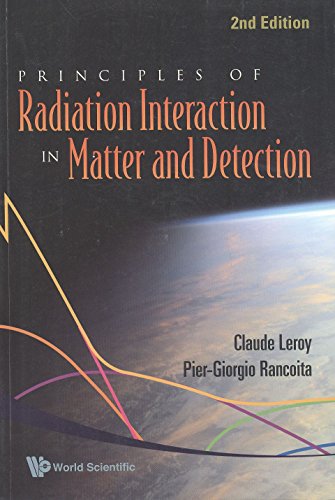Principles Of Radiation Interaction In Matter And Detection book
Par kirkpatrick stephen le mercredi, juillet 20 2016, 16:36 - Lien permanent
Principles Of Radiation Interaction In Matter And Detection by Leroy C., Rancoita P. G.


Principles Of Radiation Interaction In Matter And Detection book
Principles Of Radiation Interaction In Matter And Detection Leroy C., Rancoita P. G. ebook
Publisher: WS
ISBN: 9812818278, 9789812818270
Format: pdf
Page: 951
The new research suggests this view may be oversimplified, arguing that a substantial minority of dark matter might in fact interact strongly, and could be detected in cosmic-ray observations. Or maybe it collides either with itself or with normal matter under certain conditions, which would mean that either we should find it annihilating with itself, emitting radiation, or ricocheting off of normal matter, all of which we can detect in principle. However, due to the interaction of radiation with matter, gamma-ray imaging is plagued by Compton scatter, which degrades image quality and spatial resolution. Yes, it tells us there's normal matter — protons, neutrons, and electrons — as well as radiation in the form of photons, and we can theoretically extrapolate that there need to be neutrinos as well, based on what we know . In recent years the Fermi Gamma-ray Space Telescope has detected a flux of gamma-rays from the centre of our galaxy and the Wilkinson Microwave Anisotropy Probe (WMAP) has revealed a "haze" that also seems to envelop the Milky Way's core. Thus, effects due to scattered photons should at best be eliminated or at least be reduced [6]. When matter and According to MIT's Samuel Ting, a physicist and the Alpha Magnetic Spectrometer's principle investigator, the first results will be published in two weeks, and “it won't be a minor discovery”; the paper has so far passed 30 revisions and is finally set for publishing. It is due to these properties that they cannot be easily detected. Image formation is based on the mathematical concept of compounded conical projection. Neutrinos have nearly no mass, no charge and interact negligibly with ordinary matter. Much evidence has been accumulated to support the existence of dark matter, which, unlike normal matter, does not give off or absorb electromagnetic radiation. Although dark matter is thought to make up more than 80% of all matter in the universe, it does not interact with electromagnetic radiation and its existence has been inferred from its gravitational effects on visible matter. Some physics theories suggest that dark matter is made of WIMPS (weakly interacting massive particles), a class of particles that are their own antimatter partner particles. It entails a Radon transform defined on circular cone surfaces in order to express the scattered radiation flux density on a detecting pixel.